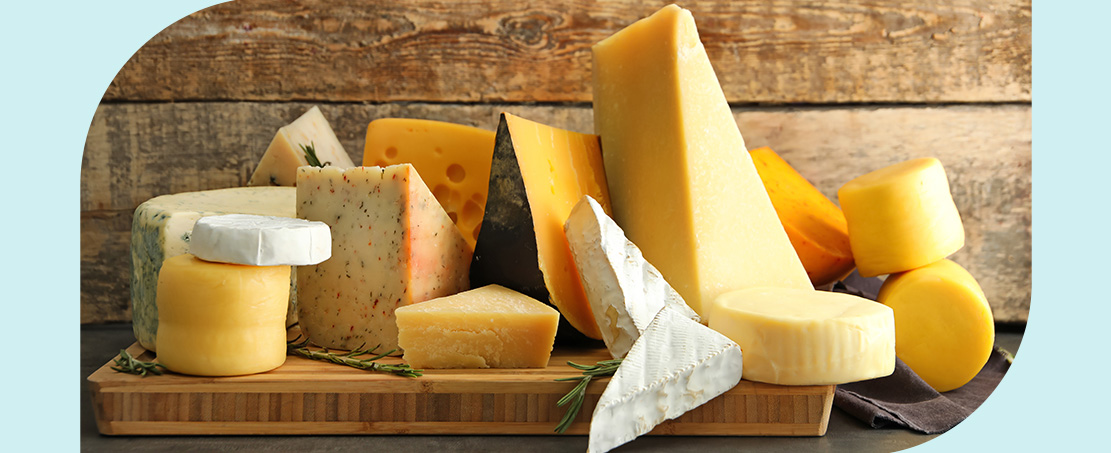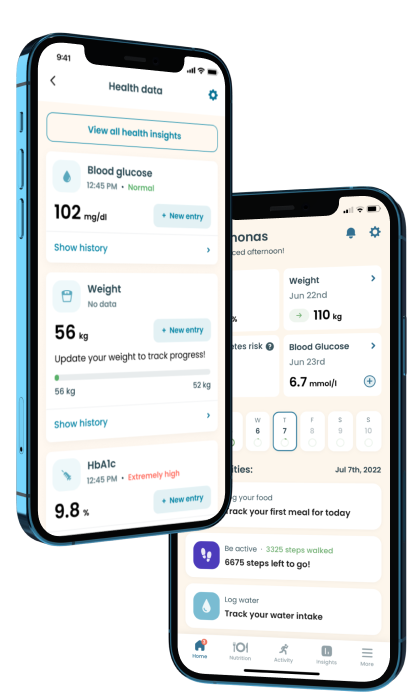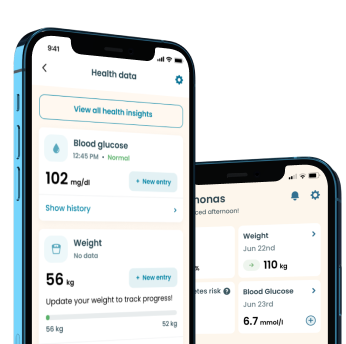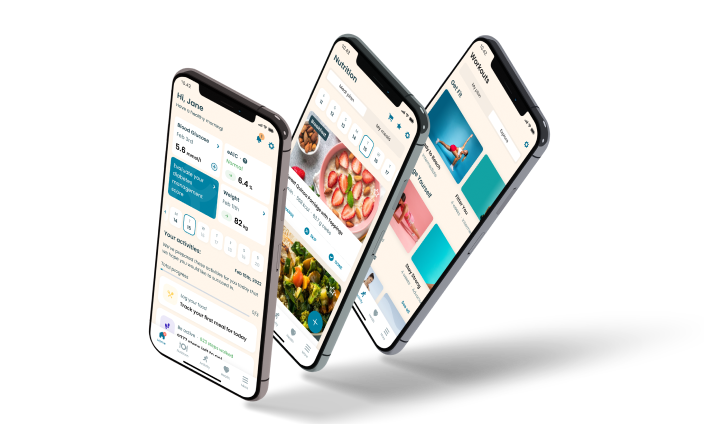How Great Is the Relationship Between Cheese and Diabetes?

No
27
352 kcal
Cheese is a popular food in American households and is considered a household name for healthy meals globally. While there are different types of cheese currently due to the different and unique brands that abound, the underlying ingredient is milk casein. As such, cheese is a dairy product and among the most popular foods gotten from cows, goats, and sheep.
Experts consider cheese healthy. However, there are certain conditions where cheese consumption becomes a source of concern. People with diabetes and high blood pressure are among those for whom cheese may not be very healthy when consumed.
Cheeses have a high amount of saturated fatty acids that can induce weight gain. According to studies, there’s a direct link between obesity and diabetes. Weight gain and increased blood sugar spike risk aren’t the only reasons cheese is considered a not-so-healthy diet for people with diabetes, as we’ll observe in this guide.
Nevertheless, despite the various risks that cheese may present for people who experience high blood sugar more often than usual, it can be a good dietary asset when consumed in proportion. This detailed guide aims to outline cheese nutrients, scenarios where it benefits people with diabetes, and the best way to eat it to control its inherent risks.
What to Expect
-
What Are Cheeses?
-
Cheese and Diabetes: Can People With Diabetes Eat Cheese?
-
Benefits of Cheese for People with Diabetes
-
Risks of Cheese for People With Diabetes
-
How Cheese Combination With Other Food Affects Sugar Level: Getting the Most Out of It
Nutritional value
- Protein 25 g
- Carbohydrate 2.2 g
- Fat 27 g
- Fiber 0 g
- Sugar 2.2 g
- Cholesterol 114 g
What Are Cheeses?
Cheeses have, over the years, gained a reputation as one of the most eaten foods in homes. This food is usually used to make different meals and is highly nutritious.
Cheeses are made from milk — they’re gotten following the coagulation of milk extracted from cows, goats, and sheep. The milk casein is the source of the cheese in extracted milk that solidifies to form the raw product. The remaining parts of the milk that don’t solidify and become cheese after coagulation are usually used to make whey protein.
Like most dairy products, raw natural cheese is mostly milk protein and fat and is healthy when healthily preserved and rid of germs. The protein in cheese is truly rich for the body and can help people with diet goals achieve their intentions.
On the other hand, the fats are mostly saturated fats, which can cause weight gain following copious intake. For moderately eaten cheese, the fats shouldn’t cause any real damage. However, it’s not uncommon for people to lean towards cheese for all of their cooking, resulting in excess intake.
While natural cheeses are often recommended, experts consider processed cheese to have more health concerns. Processed cheeses are usually significantly higher in sodium than natural cheese, and their preservation method only worsens the fat in them. For people with diabetes, processed cheese is considered a not-so-healthy option.
Cheese usually varies in flavor and texture, and as such, it’s possible to find different ones with their unique nutrients. Some of the more popular cheese varieties include:
-
Cheddar cheese
-
Cottage cheese
-
Cream cheese
-
Goat cheese
-
Romano cheese
-
Mozzarella cheese
-
Feta cheese
Subsequent sections will discuss cheese and its effect on people with high blood sugar.
Take a quiz
Discover what Klinio app can do for you
Healthy diabetes meal plan crafted just for YOU

Personalized workouts with no equipment needed

Track your progress with smart tracking tools

Cheese and Diabetes: Can People With Diabetes Eat Cheese?
Diabetes is a severe medical condition that develops predominantly in adults and occurs largely in overweight or obese individuals. However, careful treatment may help manage or even reverse it. Key among diabetes management techniques are lifestyle adjustments. Choice of foods is one of the major adjustments that experts recommend for people with diabetes take seriously.
People with diabetes need to consider the glycemic index of different foods. The glycemic index is a scale that ranks the number of carbohydrates in foods ranging from 0 to 100, therefore showing how quickly a food causes a person's blood sugar to rise. Foods high on the glycemic index scale (70 and above) may trigger harmful spikes in people with diabetes.
Most cheeses contain little or no carbohydrates, ranking low on the GI scale. Some cheeses—especially the fresh ones—can help to lower the risk of diabetes.
Since there are many cheese varieties, glycemic indices for all of them vary. However, despite these variations, all cheeses are extremely low in the glycemic index as they have little to no carbohydrates. The American Journal of Clinical Nutrition (AJCN) states that cheeses, with all their different varieties, have glycemic indices ranging from 0 to 10.
Based on their glycemic index, it’s almost certain that cheeses don’t contribute to blood sugar spikes and instead control diabetes. While these claims are true for moderate consumption, it’s important to know that most processed cheeses that feature as the most popular in grocery stores have certain alterations that could draw concern for those with diabetes.
Processed cheese is often associated with high sodium, which also plays a role in causing blood sugar spikes. Also, cheese isn’t exactly a low-fat diet and is a risk factor for heart disease complications. These particular concerns are why experts usually recommend a diabetes plan for people living with the condition.
Benefits of Cheese for People with Diabetes
As bad as cheese may appear on the outside, research proves that it does have some good health implications, as we’ll observe soon.
Lowers the Risk of High Blood Sugar and Type 2 Diabetes
Cheese can help control blood sugar spikes. According to a 2012 study, consuming about two slices of cheese per day slashed type 2 diabetes possibility or risk by 12%.
Surprisingly, cheese isn’t one of the most popular snacks for diabetes. The food is considerably lower in carbs when compared to other snacks such as chips, cookies, bagels, etc.
In fact, some cheeses—such as cheddar, halloumi, Brie, Gruyère, etc.—contain almost no carbs at all. A 2013 review and meta-analysis by the American Journal of Clinical Nutrition (AJCN) on the relationship between consuming dairy products (including cheese) and type 2 diabetes further reinforce these claims.
Many kinds of cheese are made with casein, milk, bacteria, salt, and water. Hence, be careful to avoid the cheeses overloaded with sodium, which may, in turn, increase blood pressure and affect your cardiovascular health. Summarily, steer clear of processed cheeses and opt instead for vegan cheeses to ensure proper management of your type 2 diabetes.
Improves Insulin Sensitivity
Most, if not all, dairy products are enlivened with the goodness of calcium. This nutrient increases bone mineral density and strengthens the bones. Apart from its delicious taste, cheese is a great source of calcium which has been found to boost insulin sensitivity in diabetes patients.
According to a Nutrición Hospitalaria article, consuming a minimum of 3 servings of dairy products low in fat can improve insulin sensitivity, depending on the individual and associated sugar level. You can add cheese to egg recipes to make them more delicious and hearty.
Rich in Protein
Generally, cheese is high in protein that helps curtail the blood sugar spike triggered by eating carbs alone.
However, the quantity of protein differs depending on the type of cheese. For example, one ounce of Parmesan contains 10 g of protein, while cheddar offers just 7 g. You should know that protein gives you a fuller feeling for longer, helping to control a craving for unhealthy food.
People with diabetes should choose the protein they consume based on the quantity of fat and carbs contained in these foods. While protein-rich foods are also high in fat, they can result in weight gain and high cholesterol.
Risks of Cheese for People With Diabetes
Despite the purported benefits of cheese intake, it presents some concern, especially when eaten without discretion. Here are some of them.
High in Fat and Calories
Cheese is considered risky for people with diabetes because of its high fat and calorie content. Scientific reports indicate that dairy fat isn’t a great meal choice for diabetes patients due to the health issues associated with it. Avoiding foods with high-fat content, especially saturated ones, reduces your risk of suffering from cardiovascular diseases.
Saturated fats have links to health issues like heart diseases and gallbladder problems, hence the need for a moderate intake, especially for people with diabetes. You should go for unsaturated fats while you ensure consuming only a moderate amount of dairy fats. Unsaturated fats can stem from avocados, nuts, vegetables, etc.
Though the levels of calories vary with the variety of cheese, it’s advised that people with diabetes don’t overly indulge themselves. People with issues of diabetes must stick to small servings of cheese.
Generally, cheese contains many calories, hence the need to control your intake of it. For instance, 1 oz of cheddar cheese contains 113 calories, which is too much to take in, especially if you have diabetes. To avoid health issues, you should go for cheese with reduced fat and calorie levels.
Dairy Allergies or Intolerance
A hypersensitive reaction or intolerance to a particular substance, when taken in, defines what’s known as an allergy. While many people don’t tolerate dairy, some are allergic to it.
Cheese contains a high level of dairy fats, making it an unhealthy choice for some persons, especially those with diabetes. Minimizing your cheese intake or excluding it from your diet makes more sense when you consider that foods like nuts provide the same and even healthier benefits as cheese. If you must eat cheese, you should go for non-fat ones. Diabetes patients who reduce their cheese intake lower their risk of suffering health issues, including allergic reactions.
High Sodium
Sodium is often associated with increased blood pressure and other cardio-related functioning in the body. As a result, people with diabetes are advised to reduce their sodium intake as these are prominent diabetes complications.
If you’re to consume cheese as a person with diabetes, you should check labels for nutritional facts and go for those with low sodium levels. For instance, mozzarella cheese has just 4 mg of sodium, while feta packs a whopping 316 mg.
How Cheese Combination With Other Food Affects Sugar Level: Getting the Most Out of It
Cheese, on its own, is known to cause a moderate rise in blood sugar levels. However, you should avoid combining it with sugary foods like crackers. Namely, such combos can spike blood sugar levels, leading to serious health issues for persons with diabetes.
Generally, you should be mindful of what you combine cheese with so you don't suffer any health problems. This is particularly vital when managing your sugar and saturated fat intake. The following sections throw more light on how you can get the most out of cheese and how best to include it in your diet.
Helpful Considerations
There are myriads of myths concerning cheese being good or bad for people with diabetes. However, everything we’ve discussed so far indicates that eating cheese when you have high blood sugar can be good and bad at the same time. Generally, what matters most is the type of cheese and how much of it you eat on average.
Compared with many other foods, cheese is high in calories and fat and would obviously seem like a poor choice for people living with diabetes. In contrast, people who have diabetes can eat cheese without it triggering a spike in their blood sugar level or weight gain. This is achievable by eating cheese with a healthy, balanced approach.
You can also serve healthy cheese with meals high in fiber or low in calories. In the long run, you could successfully incorporate cheese into a healthy meal if you have diabetes.
There are proven ways that people with diabetes can maximize cheese's benefits to their health, as with other foods. Following these steps will reduce the negative impact of cheese on their health and increase their chance of deriving the good sides of cheese:
Regulate Cheese Consumption and Combine It With Healthy Foods
Living with diabetes doesn’t necessarily mean that you wouldn’t be able to enjoy cheese from time to time. The goal of managing your condition is to eat a balanced diet. So, the best way to enjoy the benefits of cheese is to eat it with other healthy foods and healthy drinks like lemon juice and polenta.
You may also enjoy cheese with carbohydrates like crackers, fresh fruit, and honey on a cheese platter to control the effect of the carbs' high glycemic index.
The overall goal is to avoid any food that will induce a spike in blood glucose. While doing this, you should pay heed to portion control—starting with the cheese itself—to successfully slash saturated fat and salt intake. As a rule of thumb, people with diabetes should avoid meals that contain more than one serving of cheese per day.
Know the Best and the Worst Type of Cheese to Eat
Due to the wide variety of cheese, there’s no general nutritional value encompassing all the nutrients they offer. While some cheeses don’t contain any type of carbohydrates, others aren’t so healthy.
The best types of cheese to eat are those that don’t have any naturally occurring sugar. These cheeses don’t have any serious risk for people with diabetes when eaten in moderation. Low-fat cheese is also a great option due to its significantly low unhealthy fat content.
The worst type of cheeses to eat are processed cheeses. These varieties are mostly sold in grocery stores and usually contain a lot of unhealthy fats. Eating processed cheese could lead to excessive saturated fat intake and cause various complications like weight gain, high cholesterol, and complicated cardiovascular disease risks.
Summarily, some of the best cheeses to eat include:
-
Low-sodium cottage cheeses
-
Wensleydale
-
Emmental
-
Mozzarella
-
Cream cheese
Cheeses to avoid include:
-
Feta
-
Imported blue cheese
-
Edam
-
Halloumi
Conclusion
Eating healthy with diabetes can be challenging!
However, the key to healthy eating is choosing the appropriate foods in line with your health status. So far, this guide has outlined the relationship between cheese and diabetes. So, whatever your offering is—goat cheese, Romano, cottage, Feta, cheddar, or Mozzarella—know that each has a wide range of beneficial enzymes that can make your diabetes journey a safer road to travel.
However, if you’re undecided about what cheese to choose, you should seek the advice of a registered dietitian to help develop a healthy eating plan perfect for your needs. Alternatively, you could opt for a diabetes management meal app that has proven to help users with healthy food choices. The latter can help you immensely as you’ll consume fewer carbs and saturated fats known to cause high blood sugar and weight gain, respectively.
Our expert-developed Klinio app is one of the major diabetes meal apps you can trust for healthy, diabetes-friendly meals for good and healthy eating. Notably, this virtual caregiver is designed to provide users with the latest update on the best meals for people that struggle with high blood sugar.

Download Klinio app!
Get more by downloading our free Klinio App. Analyze your health, form new habits and manage your diabetes anytime, anywhere.
OR
SCAN QR CODE



GET THE APP











